Why did the Americans return to operation type Iowa battleships
"Iowa" - a type of battleship American fleet period of the second world war. In total, 4 ships were built in the USA: Iowa, New Jersey, Missouri and Wisconsin. Two more battleships of this type were planned for construction - Illinois and Kentucky, but their construction was canceled due to the end of World War II. The lead ship of the series, the battleship Iowa, was launched on August 27, 1942 and entered service on February 22, 1943.
“Iowa” type battleships were created as a high-speed version of “South Dakota” type battleships. At the same time, their booking has not changed. To achieve the design speed of the node 32,5, it was necessary to increase the power of the power plant, this caused an increase in the displacement of ships by 10 thousand tons. This increase was rightly considered an inadequate price only for additional 6 speeds, so the designers placed on the 9 ship new 406-mm guns with a barrel length 50 caliber. Due to the speed at 32,5, the Iowa hubs were considered the fastest battleships in the world. At the same time at a speed of 15 nodes, their cruising range reached 17 000 miles (an excellent indicator). Seaworthiness was also good, surpassing predecessors in this indicator. In general, American engineers managed to create an excellent series of warships with a balanced set of characteristics that remained in service (with interruptions) for more than 50 years.
One of the controversial points in the design of Iowa-type battleships was the abandonment of anti-mine caliber by Americans. Most of the battleships of that time period necessarily received at least a dozen 152-mm guns and another battery of 12-16 large-caliber anti-aircraft guns. The Americans in this regard showed unprecedented audacity by equipping the 20 Iowa with universal five-inch (127-mm) artillery guns, which were located in the 10 coaxial installations. This weapon was an excellent means of defense, while this caliber was enough to fight the enemy destroyers. As practice has shown, half the warhead and the mass of projectiles were successfully compensated by the enormous rate of fire of universal guns (12-15 rounds per minute) and the phenomenal accuracy of the fire, using the MK.37 perfect at that time, which was used for firing on both air and surface targets.
It is no coincidence that during the Second World War, thanks to powerful weapons, which were supplemented by 19 quadruple 40-mm "Bofors" and 52 dual and single 20-mm "Oerlikon", Iowa battleships were part of high-speed aircraft carrier connections, playing the role of the core of an air defense order. If we talk about the technical side of the issue, a real technological gulf lay between the Bismarck, which was commissioned in the 1940 year, and the Iowa (1943-1944 years). During this short time, technologies such as radiolocation and fire control systems (LMS) have taken a tremendous step forward.
The implemented technical solutions and the potential embedded in the ships made American Iowa-type battleships truly long-playing ships. They took part not only in the second half of World War II, but also in the war in Korea. And two battleships - "Missouri" and "Wisconsin" took part in the hostilities against Iraq from January to February, 1991, during the famous operation "Desert Storm".
At the same time, back in 1945, it seemed that World War II had forever changed the military’s perception of battleships, putting an end to almost a century stories armored ships. The Japanese superlinkor Yamato, as well as its Musashi sistership, which could sink any enemy ship in an artillery battle, were the victims of American raids aviation. Each of these battleships received about 10 torpedo hits and about 20 air bombs during massive attacks. Earlier, in 1941, when attacking the American naval base Pearl Harbor, Japanese torpedo bombers managed to sink 5 American battleships and seriously damaged three more. All this gave rise to military theorists to say that now the main striking force on the sea are now aircraft carriers, which, as part of battle groups, are able to destroy any ship of the enemy fleet.
And the advantages of the new battleships turned around their Achilles' heel. Crucial importance was acquired not by the power of the artillery of the main caliber, but by the accuracy of its firing, which was ensured by the use of complex rangefinders and radar installations. These systems were very vulnerable to enemy artillery fire, as well as air attacks. Having lost their "eyes" of the battleships with their main-caliber artillery, little could be done in battle, it was almost impossible to conduct accurate fire. The role played and the development of missile weapons.
During all the post-war years, the United States and other states gradually removed their battleships from the fleet, dismantling formidable warships and sending them for scrap. However, such a fate passed the Iowa type battleships. In 1949, the retired ships were returned to service again. They were used during the Korean War, and all four battleships took part in it. Battleships were used to suppress "point" targets with artillery fire.
After the end of the war in 1953, the ships were retired again, but not for long. The Vietnam War began and it was decided to return to the “services” of Iowa type battleships. True, the war now went only one "New Jersey". And this time the battleship was used for artillery strikes on the squares, supporting the operations of the US Marine Corps in the coastal areas of Vietnam. According to military experts, one such battleship during the Vietnam War replaced at least 50 fighter-bombers. However, unlike aviation, his tasks did not prevent him from carrying out enemy air defense systems, as well as bad weather. The battleship "New Jersey" was always ready to support the troops fighting on the shore with artillery fire.
It is worth noting that the main projectile of the Iowa battleships was considered a “heavy” armor-piercing projectile Mk.8 weighing 1225 kg with an explosive charge (EX) 1,5 percent by weight. This projectile was specifically designed to fight at long distances, it was optimized to penetrate the decks of enemy ships. To provide the projectile with a more hinged trajectory, like the battleships of South Dakota, a reduced charge was applied, which provided the projectile with an initial velocity of 701 m / s. At the same time, the full charge of the powder - 297 kg provided the initial flight speed - 762 m / s.
However, by the end of the Second World War, these battleships were used mainly for attacking coastal targets, so the high-explosive shells Mk.13 entered into their ammunition. Such a projectile weighed 862 kg, and the relative mass of the explosive was already 8,1 percent. To increase the survivability of gun barrels when firing high-explosive shells, a reduced powder charge with a mass of 147,4 kg was used, which provided the projectile with an initial velocity of 580 m / s.
In the 1950-60, the battleships underwent only minor upgrades. They dismantled 20-mm, and then 40-mm automatic guns, and also changed the composition of the radar weapons, changed the fire control system. The value of battleships in the era of rocket ships has become quite low. By 1963, the Americans expelled from the fleet in reserve 11 of other types of battleships and 4 "Iowa" were the last battleships of the US Navy.
They decided to return these battleships from the reserve at the end of the 1970-s, the modernization of the ships was carried out in the 1980-s. There are several reasons why this was done. The simplest and most obvious reason is the powerful artillery weapons of the battleships, which could still be used, given the huge stockpiles of shells for 406-mm guns. Already in the 1970-ies in the midst of the Cold War, some experts raised the issue of the re-introduction of Iowa-type battleships. As a justification of this decision, the calculation of the cost of delivery of ammunition to the target was given. The Americans showed practicality and found that 406-mm Iowa guns in 30 minutes would be able to launch 270 high-explosive 862-kg projectiles with a total weight of 232,7 to the target 228,6. At the same time, the aircraft wing of the Nimitz nuclear aircraft carrier, provided that each plane had completed three sorties, could drop tons of bombs on the enemy’s 12 per day. At the same time, the cost of delivering a ton of "ammunition" for the Nimitz was 1,6 thousand dollars, and for the battleship Iowa - XNUMX thousand dollars.
It is clear that the comparison of the delivered mass of ammunition is not entirely correct, since aircraft are able to strike at a much greater distance than the battleship. Also, due to the greater mass of explosives, bombs have a larger lesion area. Despite this, at the end of World War II, during the wars in Korea and Vietnam, a sufficient number of tasks arose that could be solved by heavy ship artillery, and with the greatest efficiency and lower costs. The fact that about 20 thousands of 406-mm projectiles, as well as 34 spare barrels for the battleships had accumulated in the American arsenals, also played its role. In the 1980-ies, it was even planned to create ultra-long shells. With a weight of 454 kg they should have an initial flight speed of 1098 m / s and a range of 64 km, but the matter did not go further than the experimental samples.
In the course of upgrading Iowa type battleships in 1980s, 4 of 10-paired 127-mm artillery units were dismantled from them by 143. In their place were located eight armored quad launchers Mk.109 to launch cruise missiles BGM-32 "Tomahawk" for firing at ground targets with ammunition in 4 missiles. Additionally, the ships were installed on 141 installation Mk.4 16 container in each for 84 anti-ship missiles RGM-4 "Harpoon". The closest anti-aircraft and missile defenses were to be provided by the 15 anti-aircraft artillery complex Mk.20 Vulkan-Phalanx. Each of them consisted of six-barrel 61-mm gun M5 "Vulkan", which was stabilized in two planes and had an autonomous radar fire control system. In addition, 1986 stationary positions for Stinger MANPADS were located on the superstructures of the battleships. The radar equipment of the ships was completely updated. A helipad appeared in the stern of the battleships. And in December, 1988, on Iowa, additionally installed a device for the start and landing of the Pioner UAV. At the same time, the crew of the battleships was significantly reduced, in 1510, on Iowa, 1945 people served, and in 2788, the crew consisted of 151 people, including the officer XNUMX.
As noted in the blog naval-manual.livejournal.com, the battleships were needed by the US not only as large artillery ships capable of effectively fighting coastal targets. The idea of restoring existing battleships arose in the second half of the 1970-ies and was put into practice as part of the Reagan administration's 600 Ships program. In the middle of 1970, leaders, including admiral James Holloway, fleet secretary W. Graham Claytor (junior), assistant secretary James Woolsey, achieved consensus in the Washington naval district - the US Navy had to fight for supremacy at sea against the USSR . Offensive operations were considered the most effective option against the Soviet fleet.
At the technical and operational levels, the US Navy faced at that time two relatively new problems: a significant increase in the number of Soviet surface ships equipped with anti-ship missiles; and an increase in areas that could be the scene of hostilities — now the Indian Ocean and the Caribbean have been added to the number of potential hot spots on the planet. In accordance with the idea that the US Pacific Fleet should be active at its place of residence (earlier plans allowed the transfer of the main forces of the fleet to the Atlantic), all this required increasing the number of ships in the US fleet. The US Navy should, if necessary, conduct active military operations on five directions simultaneously (the North Atlantic, the Mediterranean, the Soviet Far East, the Caribbean and the Indian Ocean).
The fleet also planned to form 4 surface combat groups (NBG), which were smaller combat groups that did not include aircraft carriers. The obvious role of four Iowa type battleships was becoming the central element of these groups. The Americans planned that the group would include a battleship, a Ticonderoga type cruiser and three Arly Burke type destroyers. Armed with cruise missiles, such NBGs will be equivalent to Soviet combat groups and will be able to act independently as active strike groups in areas of moderate threat. They could be especially effective in carrying out operations against coastal targets and in support of amphibious operations, thanks to powerful artillery and cruise missiles.
According to the plans of American strategists, such surface combat groups led by the battleship could act both independently and in conjunction with aircraft-carrier strike groups. Acting independently of aircraft carriers, the NBG could provide the possibility of "surface war" in areas with reduced underwater and aerial threat (such areas included the Indian Ocean and the Caribbean). The battleships remained dependent on their escort, which provided them with anti-aircraft and anti-submarine defense. In high-threat areas, the battleships could act as part of a larger carrier-based strike group. In this case, the battleships recorded three roles at once - the attack of surface and ground targets, support for the landing.
At the same time, the fire support of the landing force (the fight against ground targets) was one of the main tasks of the Iowa type battleships in the 1980s, but it was not, apparently, the main cause of their depopardation. In those years, the thoughts of the American military command were concentrated not on the coast, but on the high seas. The idea of a battle with the Soviet fleet, rather than a projection of force in various regions of the oceans, became dominant. This is confirmed by the fact that the battleships were modernized and returned to service at the height of the fight against the Navy of the Soviet Union - and were dismissed just after this peak was passed (an indicative fact). The battleship Iowa was put into reserve on January 26 1990, New Jersey 2 February 1991, Wisconsin 30 September 1991, Missouri 31 March 1992. The last two even took part in the fighting against Iraq during Operation Desert Storm.
Returning ships to service in the 1980s, the American fleet leadership considered the NBGs built around Iowa-type battleships as an independent means of fighting Soviet surface ships - at least in those areas where there was no threat of massive use of Soviet aircraft. Among other things, the battleships, apparently, were supposed to solve the problem of fighting with surface ships of the Soviet Navy, which were hanging "on the tail" of American aircraft carriers. For this, they could be included in the AUG. The question of what would be their main weapons - "Tomahawks", "Harpoons" or 406-mm guns - remains open. The close contact of American and Soviet warships in those years allowed the use of artillery from both sides. In this situation, the high firepower of the battleships, supplemented by their armor and survivability, became quite valuable advantages. It is no coincidence that in the 1980s, American battleships that had been modernized and received missile weapons were regularly engaged in training artillery firing at surface targets. In this sense, the giants of the end of the Second World War returned to the US Navy in the 1980-s precisely as battleships.
Information sources:
https://naval-manual.livejournal.com/17507.html
https://lenta.ru/articles/2005/07/06/battleships
https://youroker.livejournal.com/52063.html
http://wunderwafe.ru/Magazine/MK/2003_N1/18.htm
Open source materials
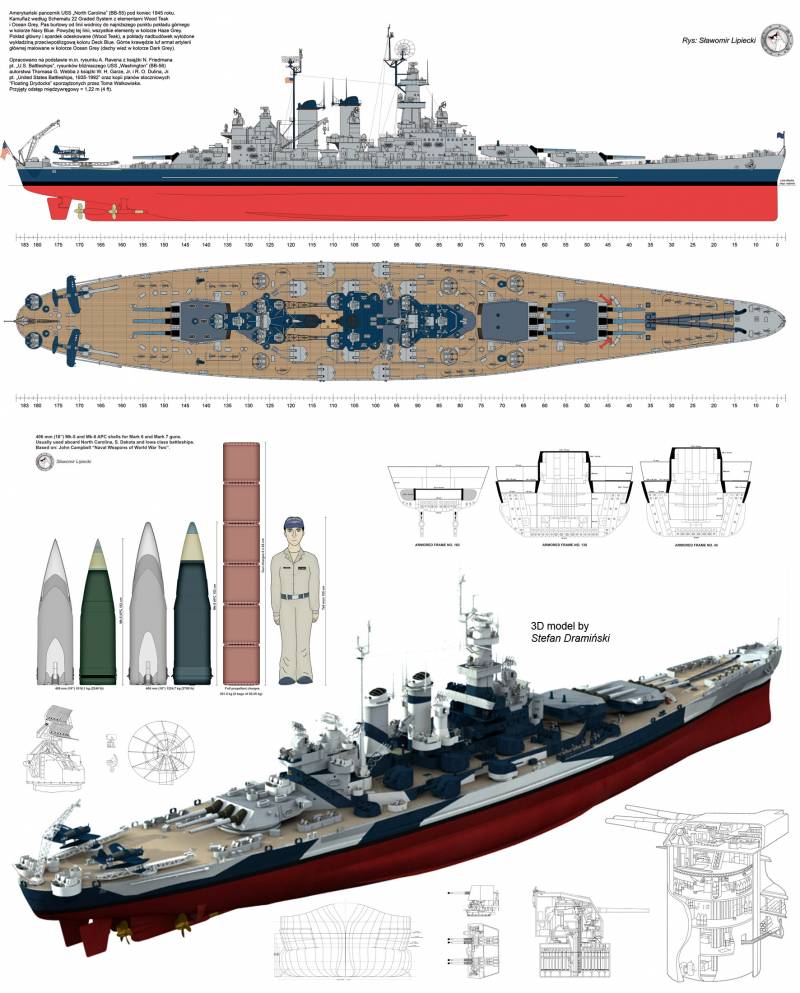
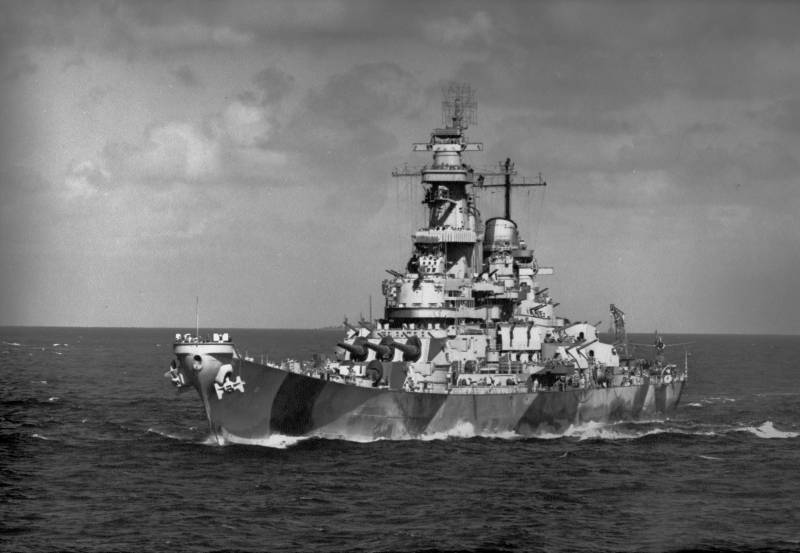
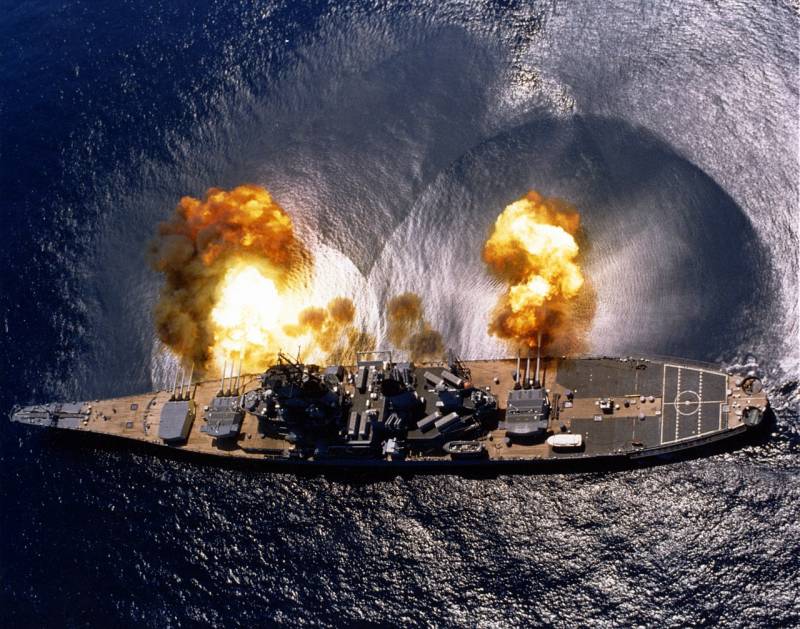
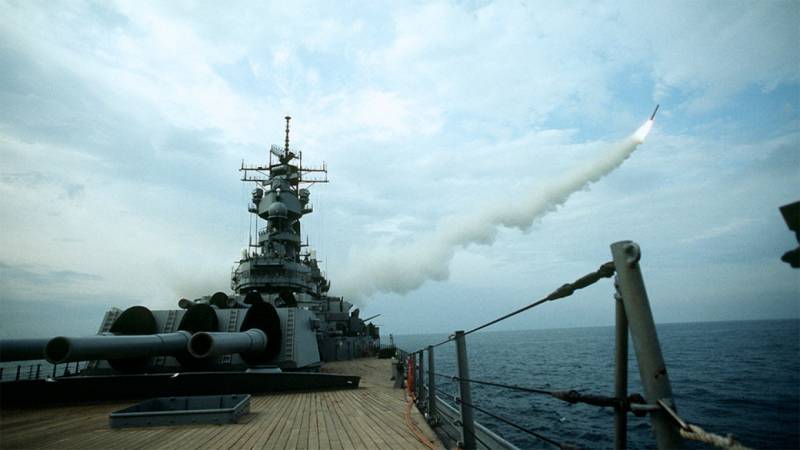
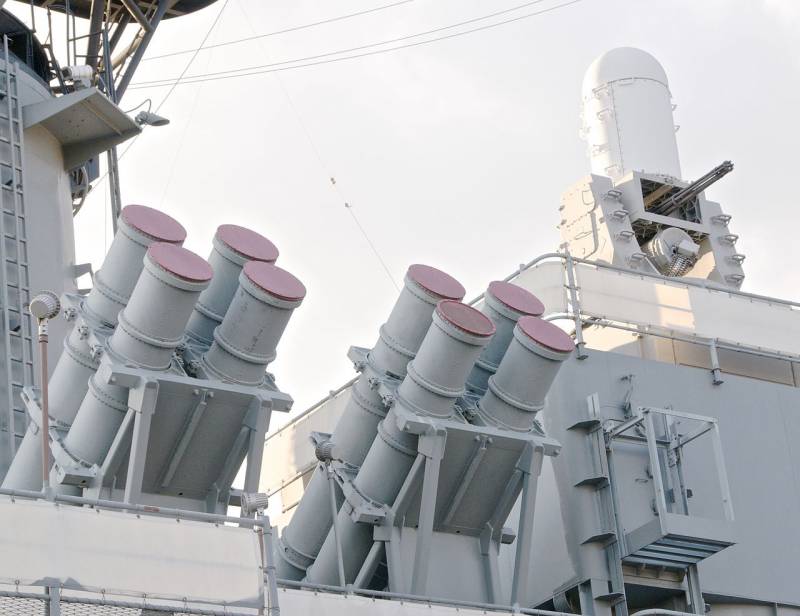
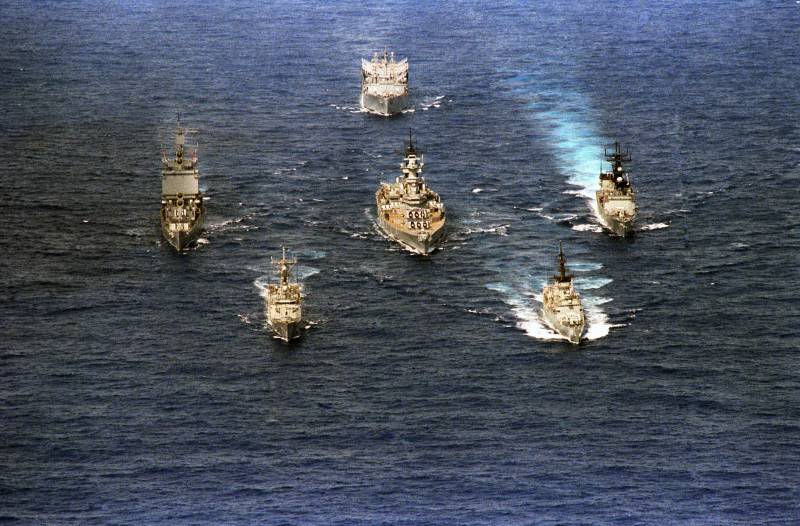
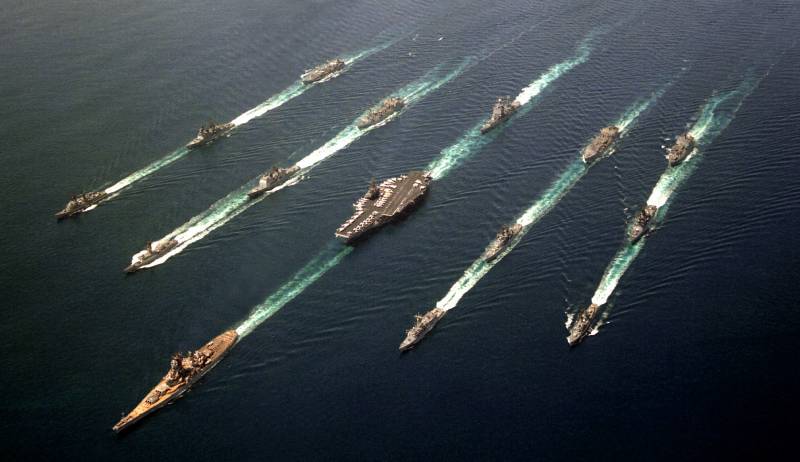
Information